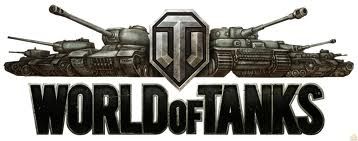I picked a kit from my (small) stash
It will be this one: Tamiya 1/35 - U.S. 2 1/2-Ton 6x6 Cargo Truck

Some information and pictures from the real deal
Thе GMC CCKW is a 2 1⁄2 ton 6X6 U.S. Army cargo truck that saw service in World War II and the Korean War, often referred to as a "Deuce and a Half" or "Jimmy". The CCKW came in many variants, based on the open or closed cab, and Long Wheel Base (LWB 353) or Short Wheel Base (SWB 352)
CCKWs were employed in large numbers for the Red Ball Express, an enormous convoy system created by the Allies to supply their forces moving through Europe. At its peak, the Red Ball operated 5,958 vehicles, and carried about 12,500 tons of supplies a day.
The name CCKW comes from model nomenclature used by GMC:
"C", designed in 1941
"C", conventional cab
"K", all-wheel drive
"W", dual rear axles
Including the DUKW, General Motors in the US produced 562,750 of these 2 1⁄2 ton 2 lb (0.91 kg)trucks just prior to and during World War II.
In 1940 the US Army set a requirement for a 6x6 truck with a 12 ft (3.7 m) cargo area and a 2 1⁄2 ton (2268 kg) off-road payload. General Motors, already supplying modified commercial trucks to the Army, modified the 1939 ACKWX built for the French Army into the CCKW. The General Motors design was chosen as the standard for the US Army.
In 1942 GM’s Yellow Truck and Coach Division began building CCKWs and 6x4 CCWs in Pontiac, Michigan and then at a Chevrolet plant in St. Louis, Missouri. In 1943 Yellow became GMC Truck and Coach Division, the trucks have been known as GMCs ("Jimmys") since then. By the end of production in 1945 562,750 had been built, a total second only to the “Jeep”
Engine and driveline[edit]
The CCKW had a GMC 270 engine, an overhead valve I6 with 91 hp (68 kW) at 2750rpm and 216 lbf·ft (293 N·m) at 1400rpm. A 3 25⁄32 in (96 mm) bore by 4 in (102 mm) stroke gave a 269.5 cu in (4.4 L) displacement. This engine was designed for commercial trucks, and proved strong and reliable in service.
The transmission was a Warner T 93 5 speed with a direct 4th gear and overdrive 5th gear. The transfer case had high and low gears, and engaged the front axle. Originally all axles were a Timken split type, later trucks also used GM banjo types.
Chassis[edit]
The CCKW had a ladder frame with three driven beam axles, the front on semi elliptical leaf springs, the rear tandem on quarter elliptical leaf springs with locating arms. There were two wheelbases, the short Model 352 and the long Model 353. The short, 145 in (368 cm) / 167 in (424 cm), was used, with a short cargo bed, as an artillery prime mover for 75mm and 105mm howitzers. All other models used the long, 164 in (417 cm) / 186 in (472 cm). Tires were 7.50-20, brakes were hydraulic with vacuum assist.
Some had 10,000 lb (4,500 kg) front mounted winches. These used longer frame rails, and could only be installed at the factory, not in the field.
Some open cab chassis were cut in half behind the cab for air transport. Each half was a load, at the destination they were bolted together.
Initially all versions used a modified commercial closed cab design having a metal roof and doors. By 1944 an open cab version, with a canvas roof and doors, was used. This was easier to build, and the roof could be removed to lower the shipping height. 1 in 4 open cabs had a machine gun mounting ring above the co-drivers position.[5][6]
No other US vehicle had a wider range of bodies, the 12 ft (3.7 m) cargo version was by far the most common. During production the steel cargo bed was replaced by a wooden one to conserve steel. Wooded beds proved unsatisfactory and a 'composite' bed with steel sides, framing, and wooden slats was developed. The composite bed was eventually replaced with an all-steel bed.[5]
The body with the most variations was a rectangular van. This was used in communications, medical, workshop, and many other specialty roles. The main difference that can be seen is the number and type of windows along the top of the box.[3][4][5]
In addition to the two major types, many other bodies were built in smaller numbers, and others were converted in the field. The CCKW performed near countless duties, some were:
Truck, cargo, 2½-Ton, 6X6, long-wheelbase / short-wheelbase
Bomb Service
Chemical decontaminating
Chemical handling
Dental Operating Van
Dump
Fire Engine
Flatbed
Fuel tanker (750 US gal (2,800 l))
High lift
K-53 Van
K-60 Van
Ordnance Maintenance Van
Pipeline equipment
Pontoon bolster
Surgical Van
Water purification truck
Water tanker (700 US gal (2,600 l))





Some picture of the kit:

I really liked the drawing and the map etc.





The sprues... They look nice ( no damage, flash, injector marks, etc.)
I really liked the





Because it's a rather 'simple' kit I bought some extra's


So this will be my entry for this SiG























